
To tell the story of the 2021 college baseball season—a season that will be unlike any other in the sport’s history, one that will come with coronavirus testing and protocols designed to limit its spread, but also more talent than ever before—we have to start at the end of the 2020 season.
Last season was the first in decades to not end with a dogpile and fireworks in Omaha. Instead, it was aborted a month after Opening Day, just as the coronavirus began spreading in America. That incompleteness reverberates through the sport today and will for years to come. To explain this year, we must first understand what happened last year.
The season began like any other with the fanfare of Opening Day on Feb. 14—Valentine’s Day. Just four weeks later, it was over.
On the morning of March 12, the college sports world was just beginning to feel the seismic effects of the nascent pandemic. Within 24 hours, it had seen the Ivy League become the first conference to cancel athletics and the NBA go on pause following the positive test by Utah Jazz center Rudy Gobert. Still, no one expected what the day would bring.
Conference after conference followed the Ivy League and NBA’s lead, placing their own seasons on pause. Then, at 4:14 p.m., the NCAA released a statement that it was canceling all its winter and spring championships—including the College World Series—due to the spread of the coronavirus. The season was over.
Esta historia es de la edición February 2021 de Baseball America.
Comience su prueba gratuita de Magzter GOLD de 7 días para acceder a miles de historias premium seleccionadas y a más de 9,000 revistas y periódicos.
Ya eres suscriptor ? Conectar
Esta historia es de la edición February 2021 de Baseball America.
Comience su prueba gratuita de Magzter GOLD de 7 días para acceder a miles de historias premium seleccionadas y a más de 9,000 revistas y periódicos.
Ya eres suscriptor? Conectar
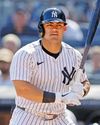
THE SERVICE TIME CONUNDRUM
MLB’s byzantine service time rules cloud rookie status and now PPI eligibility
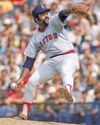
LUIS TIANT WAS MLB'S MOST SUCCESSFUL CUBAN PITCHER
On a scouting trip to Cuba in 1957, Bobby Avila discovered 16-year-old righthander Luis Tiant on the island's Juvenile League all-star team.
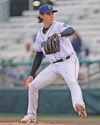
ORGANIZATION REPORT
Outfielder Heston Kjerstad's career has been unique, to say the least.
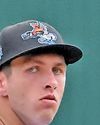
TOP 10 NL EAST
From the moment Thomas White stepped on a high school mound, he was viewed as the top lefthander available in the 2023 draft.
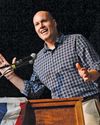
PREPARATION PAYS OFF
lowa politician J.D. Scholten makes a surprising return to pro ball at age 44
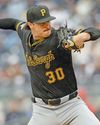
MAKING THE GRADE
Assessing the future value of graduated National League prospects
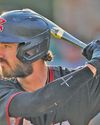
TOP 10 NL WEST
Even in high school, Bryce Eldridge could hit the ball a mile. The 6-foot-7 righthander could also touch 96 mph off the mound.
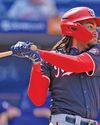
Wood Has Towering Upside- Nationals rookie James Wood also stands 6-foot-7 and also has game-changing power.
Aaron Judge and Oneil Cruz are 6-foot7 sluggers who stand out for their power in this year’s MLB Best Tools voting. Wood spent half of this season with Triple-A Rochester before making his MLB debut on July 1. While he was in the International League, he captured managers’ attention. Wood unanimously won Best Power Prospect and also claimed Most Exciting Player in a survey of league skippers. Wood hit .353/.463/.595 with 10 home runs in 52 games for Rochester. His .242 isolated slugging was the best for a player 21 or younger at Triple-A this season.
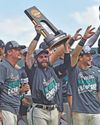
ROAD BLOCK?
Scholarship expansion puts mid-majors at a major disadvantage on the road to Omaha

ROYALS REVIVAL
A revamped and rejuvenated farm system has Kansas City ready to rebound